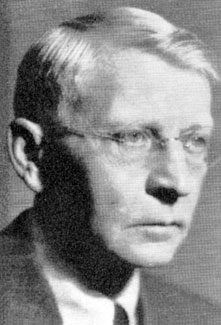Rudolph Ruzicka Brings Back Memories Of Typographic Greats
The turn of the century witnessed the development of a number of distinguished American craftsmen who were devoted to the art of printing and who contributed substantially to the craft. Bruce Rogers, Frederic W. Goudy, Daniel B. Updike, William A. Dwiggins, and most of the others have all passed from the scene, leaving behind them a body of influential work probably unparalleled by any other such group in any one period.
It is therefore a unique opportunity for mid-century printers to be able to rub shoulders with a typographic designer from that splendid company who remains an active participant in the world of print.
Such an opportunity arose this past summer at Hanover, N.H., when Dartmouth College presented an exhibition of the work of the distinguished artist, Rudolph Ruzicka, a resident of Hanover. The showing encompassed 50 years of Mr. Ruzicka’s graphic art in such fields as book illustration, wood engraving, book design, calligraphy, and type design.
Now 80 years of age, Mr. Ruzicka came to Chicago from Bohemia in 1894. At the age of 14, he went to work as an apprentice wood engraver without pay, as was then the custom in the craft. He attended the evening classes at the Art Institute, and after a year with a commercial engraving firm he decided upon a career as a designer.
Mr. Ruzicka later continued his art education in New York City, worked in advertising, and returned to his first discipline, wood engraving. About 1910, he visited W.A. Dwiggins in Boston. Mr. Dwiggins suggested that he see Daniel B. Updike of the Merrymount Press. The ensuing association with Mr. Updike lasted until the latter’s death in 1941. Notable, in addition to the illustrations and decorations produced for Merry mount Press books, was the long series of annual keepsakes which Mr. Ruzicka engraved for the press.
Friendship with Mr. Dwiggins also resulted in Mr. Ruzicka becoming interested in type design. In 1937, Mr. Dwiggins wrote him a letter which was later published by Harvard College Library under the title, WAD to RR, A Letter About Designing Type, in which he discussed his own procedures and methods for creating a type.
Mr. Dwiggins recommended Mr. Ruzicka to Mergenthaler Linotype Co., saying in part “. . . one of the most knowledgeable men in the country about the structure of letter forms and the style of letter forms.” The type which resulted from this recommendation is Fairfield, which was introduced in 1939, followed in 1947 by a somewhat heavier companion, Fairfield Medium. Both faces are now established, successful book types. In 1959 Mr. Ruzicka designed Primer, also for Linotype, which was a type primarily for use in textbook composition. The esthetic characteristics of Primer go far beyond the original concept of a “legibility” type. It is being widely used for periodicals as well as for books.
Mr. Ruzicka has been honored frequently by major exhibitions of his work. He is a medalist of the American Graphic Arts and is an Associate of the National Academy of Arts and Sciences.
This article first appeared in the January 1964 issue of The Inland Printer/American Lithographer.
